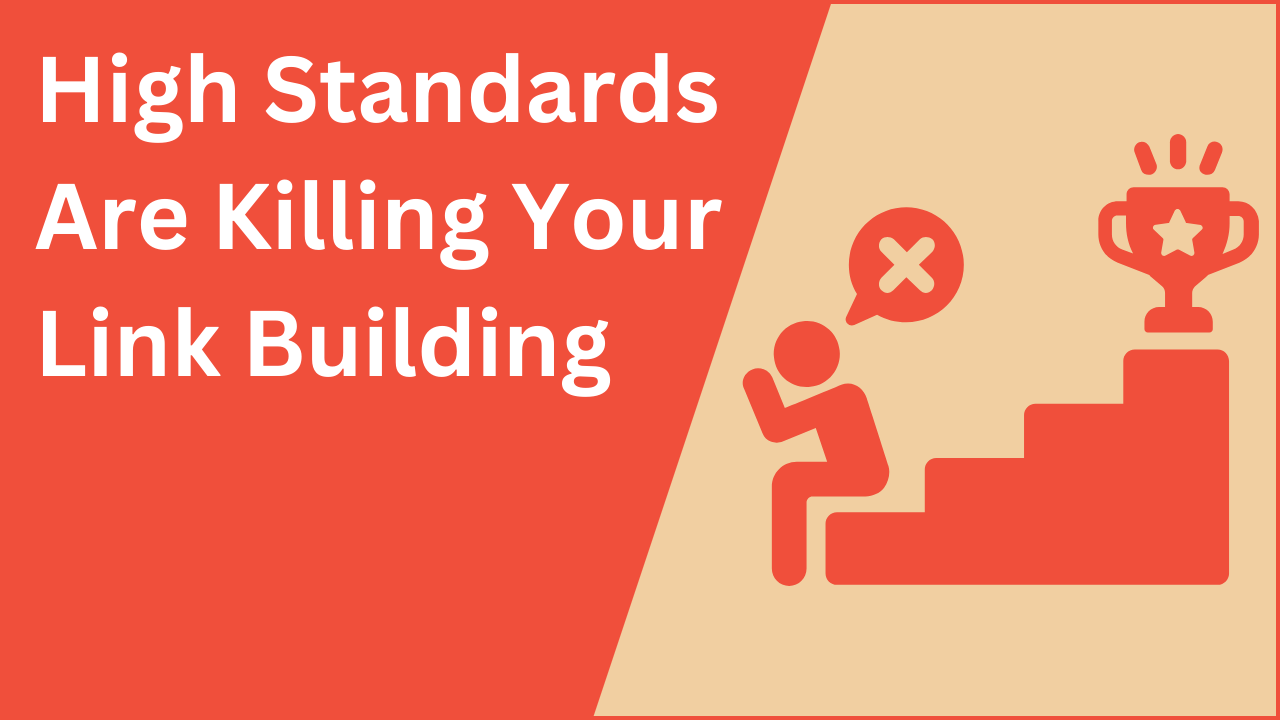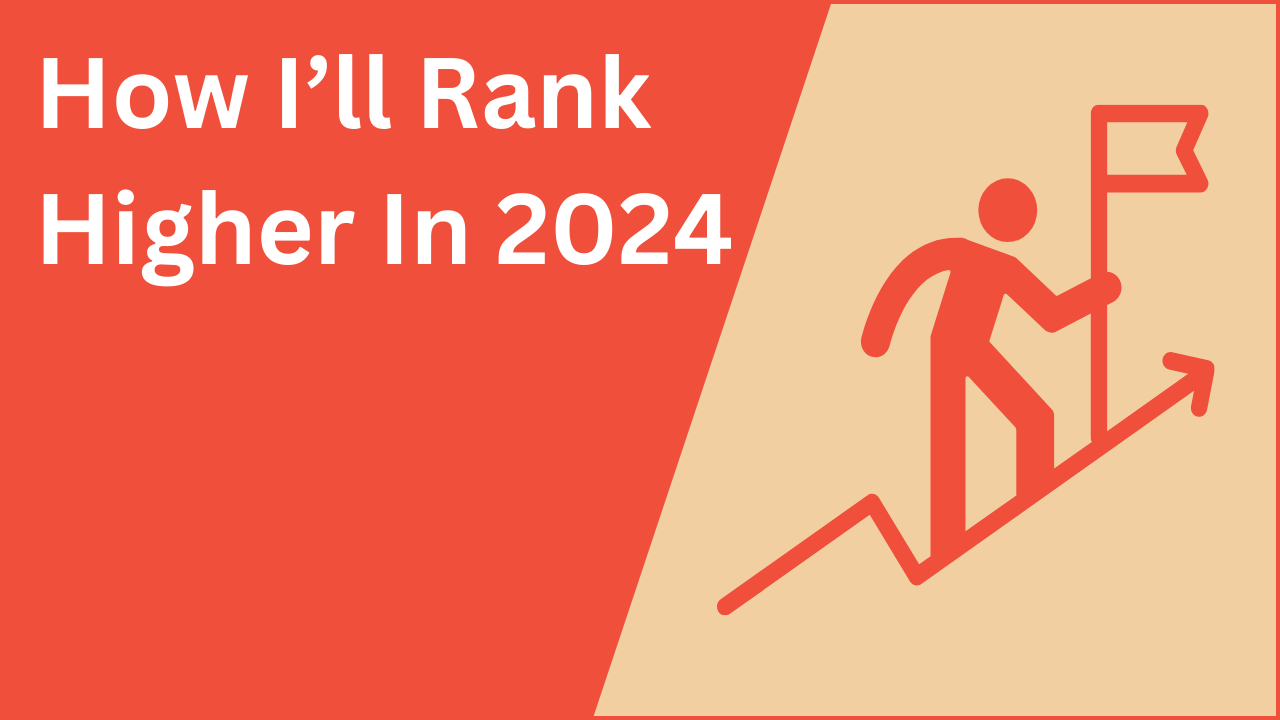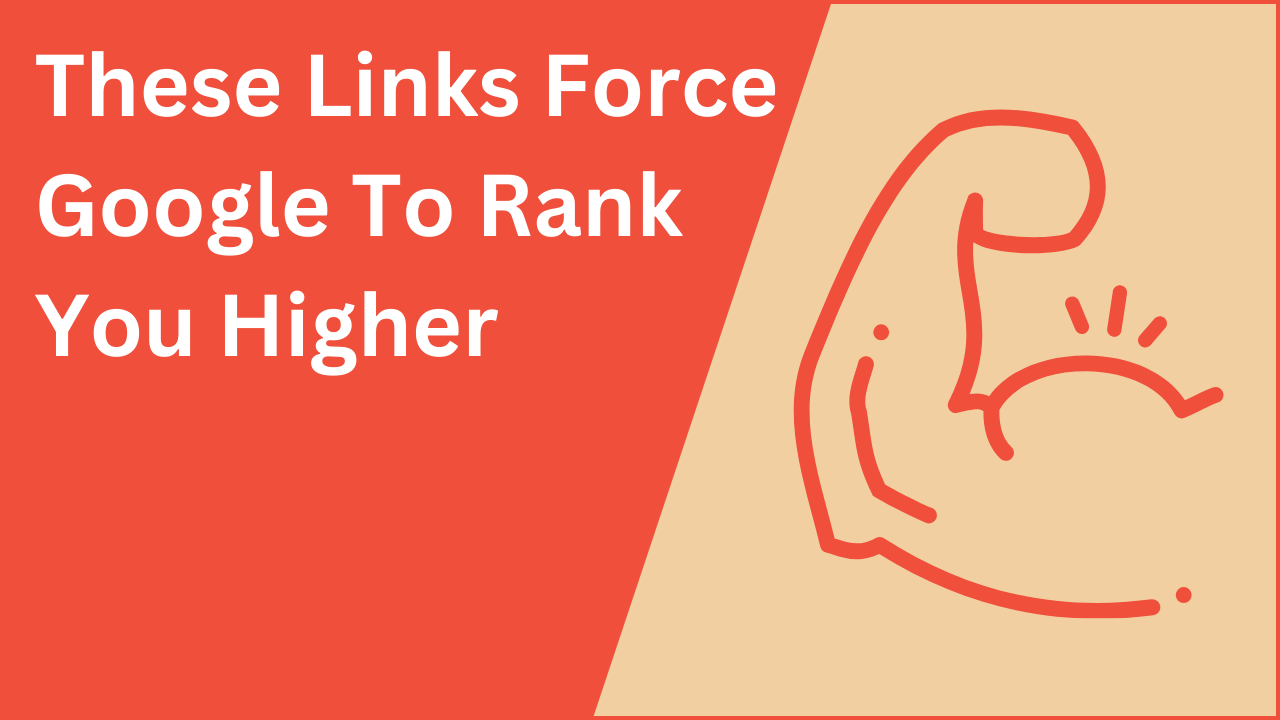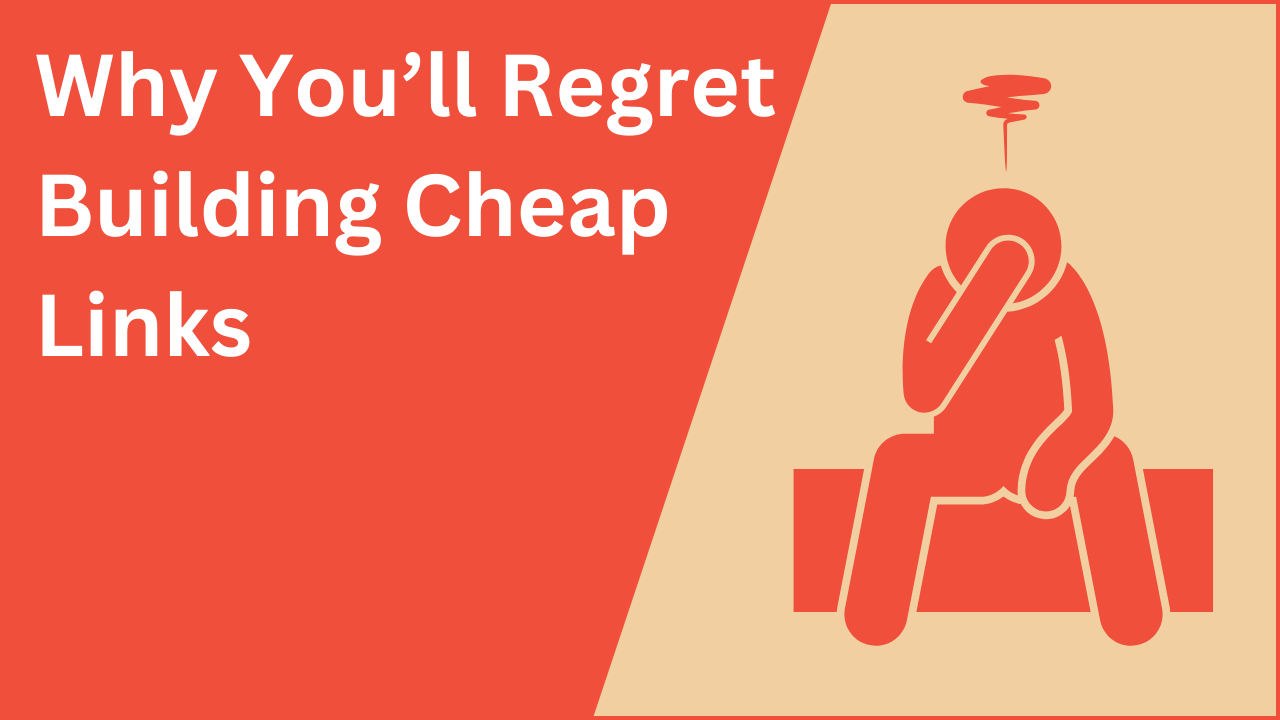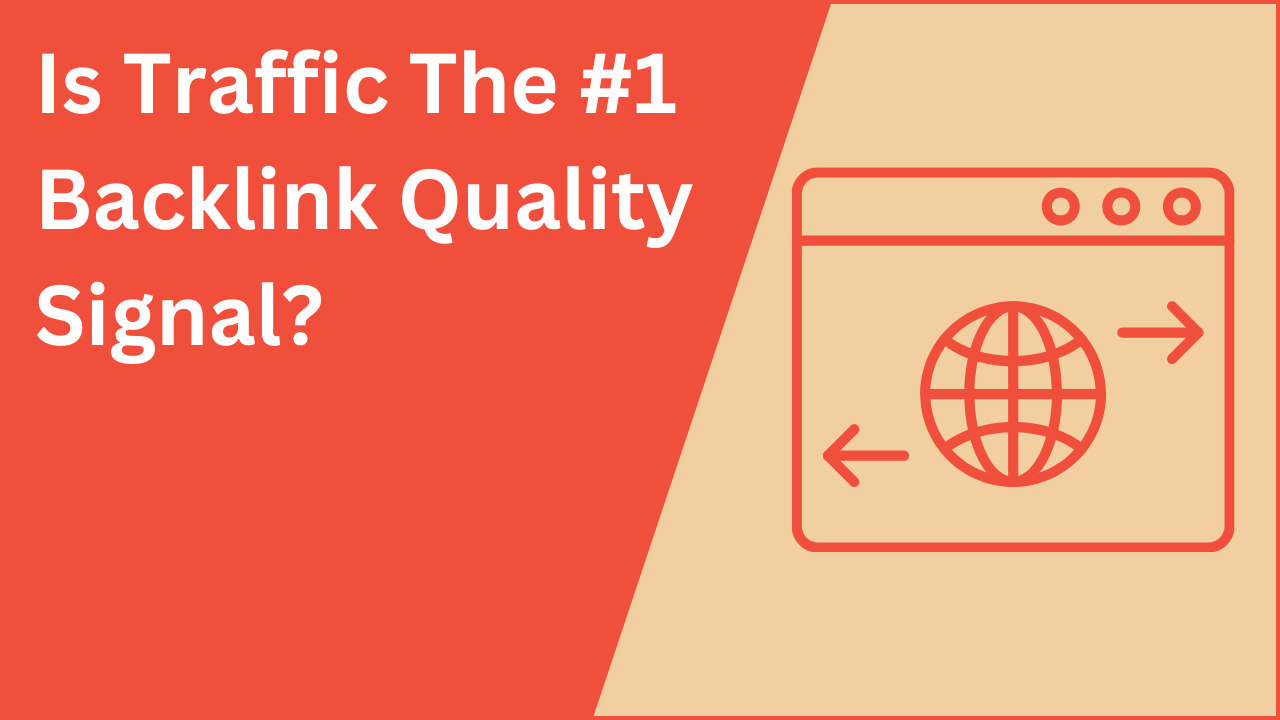Nobody really knows which links move the needle with Google (including me).
It’s largely based on assumptions and guesswork, with just enough evidence to have a sense of what works (and what doesn’t).
Unfortunately, this creates a perfect environment for hucksters.
Every link building service can claim “our links are high quality” – And whether it’s true or not is totally unprovable.
You’ve probably already experienced this if you’ve tried to work with a link building agency…
They promise you the world, and then deliver the same link farm crap that you know is available in every spreadsheet, database, and link store.
So what’s the solution here, and how the heck do you get decent links?
Well one thing’s for sure, you DON’T need to drop $30k on unpredictable PR campaigns (probably).
I’ve got some better ideas to help you land links that move the needle.
Let’s break them down in this article.
Wait, do spammy link farms actually move the needle?
In the eternal words of SEO: It depends.
Some people say they get results, some say they’re useless. We’ve never tested it definitively (and how could you anyway, with so many uncontrollable variables?)
Leaving aside the fact that we can’t even precisely define what is and isn’t a “link farm”, I’ll give you a few thoughts.
Can some of those spammy sites move the Google needle? Yea, I think they probably can.
But I think the amount of value (needle-moving power) is probably quite low.
And that the vast majority of links from these types of sites provide little to no value at all.
And it gets worse…
Even if they provide some value now, that value will probably go down in the future.
My theory is that as these sites stack more red flags, they’re easier for Google to detect, and therefore lose value.
I think the biggest issue with these sites is their outbound link profile… A typical link farm will link out a lot to all sorts of random low value websites.
I think it’s reasonable to assume that Google’s algorithms can also identify such an obvious pattern of low quality outbound links.
In short, a low quality outbound link profile is a massive red flag.
Side note:
You can use the Ahrefs Linked Domains report for a quick and dirty way to check outbound link profile quality.
Just filter for domains containing the word “casino”:
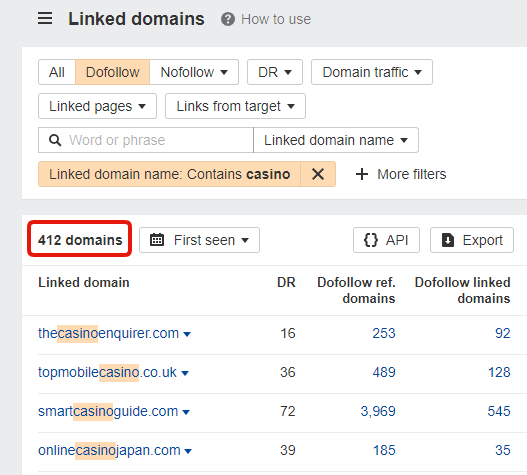
The gambling niche is one of the most competitive and aggressive for link building. So if a site links to a lot of these sites, it’s likely that they’re also selling links to a ton of sites in general.
412 such outbound links in the above screenshot is a massive red flag, and I’d say this site has a very strong pattern of selling links.
And almost all link farms have this, because they’re just selling as many links as possible to anyone and everyone who’s willing to pay.
Use logic and probability to improve your link building
Choosing which sites to build links on is all about improving your odds.
When considering the quality of a link, it’s better to think probabilistically than in a black/white way.
- Black/white: “Will this link provide value?” (Yes/no)
- Probabilistic: “How likely is it that this link will provide value” (% chance)
You use the red and green flags of a site to make a judgement call of how likely it is to provide value.
And you’ll probably be wrong about 15% of the time (although it’s impossible to know which 15%)…
But that’s fine, because overall the majority of links you build will still move the needle.
And from that perspective, most link farms don’t seem like a good investment to me – The % chance of an average link farm providing value is just too low, making it a bad bet.
A bad investment right now, and even worse if I want to build links that’ll provide value in the distant future.
So, which links should you build?
Well, better than what you get from these spammy link farms.
But it’s also important to not set your expectations too high…
You don’t want to be the site who only wants links from other sites in your exact niche, that must also be DR50+… and get 10,000+ traffic.
There’s just not that many of those links out there to be built.
And you’ll simply lose to your competitors who build more links than you.
You’ve got to be practical.
Think about what influences the algorithm instead of how you feel about a site – Sometimes sites you dislike can in fact be sensible investments.
At We Outreach we score link quality from 0-100, using an entirely objective set of criteria.
The minimum score for a link we’ll build is 60, and the average is about 80.
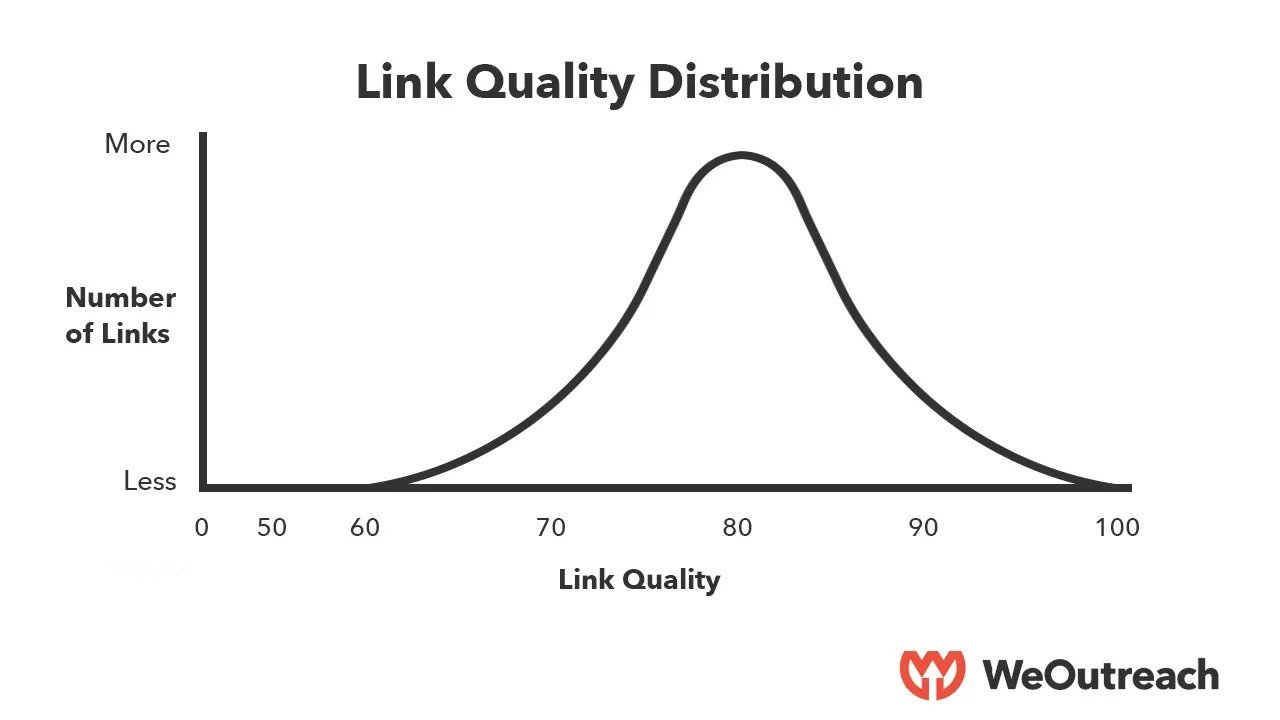
Here’s the key takeaway: Not every link you build will be perfect.
You will for sure get some sweetheart links.
But you’ve also got to accept that many of the links you build will just barely pass your minimum standards.
Side note:
Take imscouting(dot)com as an example:
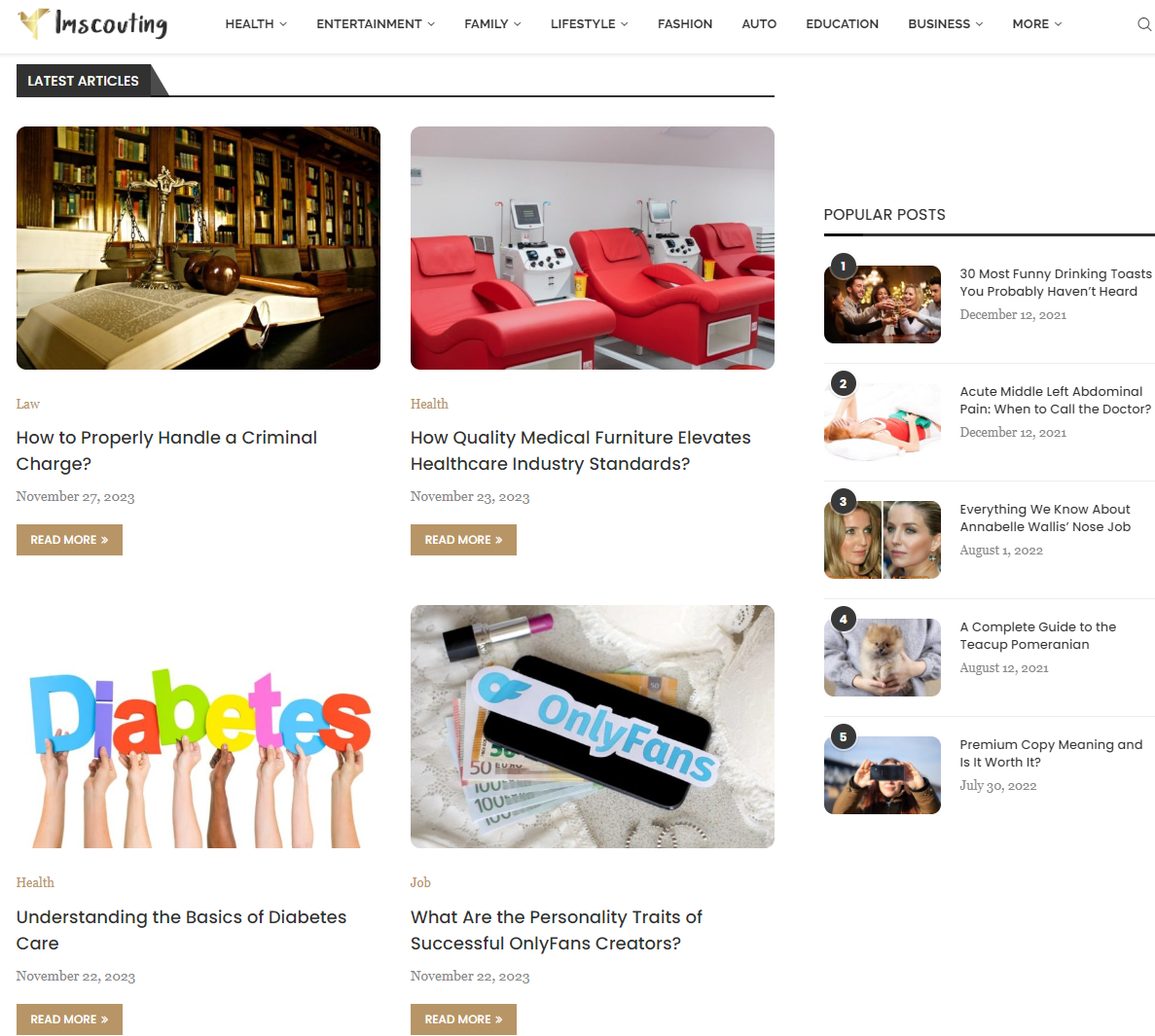
At first glance, this looks like a generic content site. It doesn’t “feel” good to me.
But if I analyse the site using our objective quality framework, it gets a pass with a score of 61:
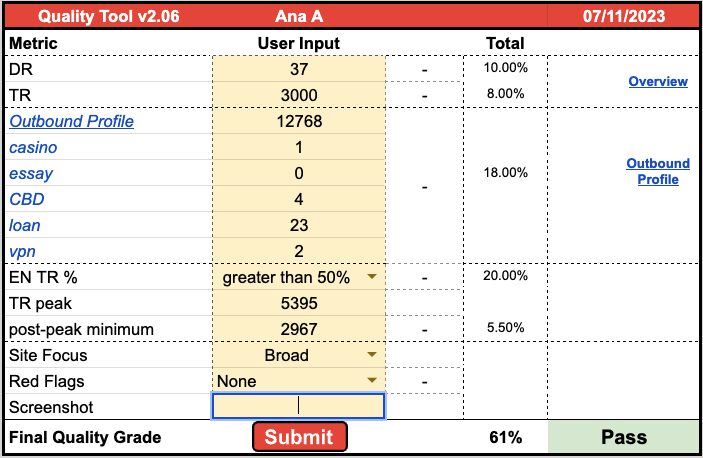
Our minimum score is 60, so this is an example of a site that just barely makes it through.
Keep in mind that the average quality score is 80, so this is an example of the bare minimum quality to illustrate my point above – Not every link you build needs to be perfect.
In this case I should put my feelings aside and build the link.
Over the years, this is the type of practical mindset that I’ve seen in most successful site owners.
I’d advise thinking about which links will influence the algorithm (now and in the future), not which ones you think are cool.
To that end, you might find the quality framework we use at We Outreach useful.
The We Outreach quality framework
In the past 5 years we’ve built over 12,000 links for our clients.
Our philosophy has always been to build links which influence the algorithm (not just “look good”), and over the years we’ve seen what works and doesn’t.
About 2 years ago we used those learnings to build an objective quality framework, to give us clear pass/fail scores for every link we’re considering to build.
It’s implemented in the form of a simple Google Sheet (which you’ve already seen in the above example):
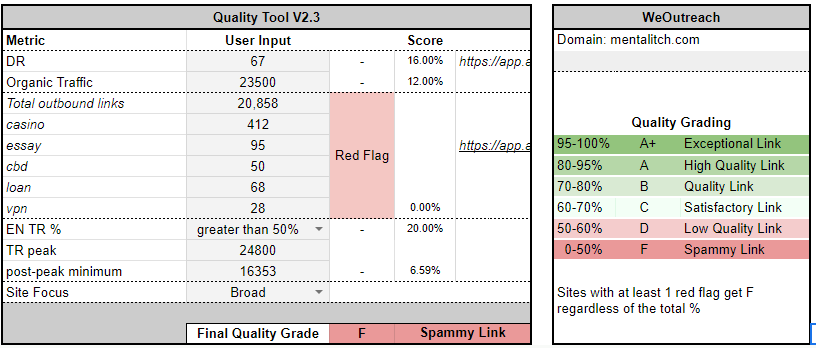
Simply enter some data about the link, and the sheet gives a pass/fail grade.
You can grab a copy.
And find a much more detailed description in this article.
Whether you’re doing link building yourself or using an agency, I’d advise having some sort of objective criteria.
No matter if it’s our framework or one you create, the point is it should help you take the “feel” out of your link building and stick to a solid practical approach to influence the algorithm.

